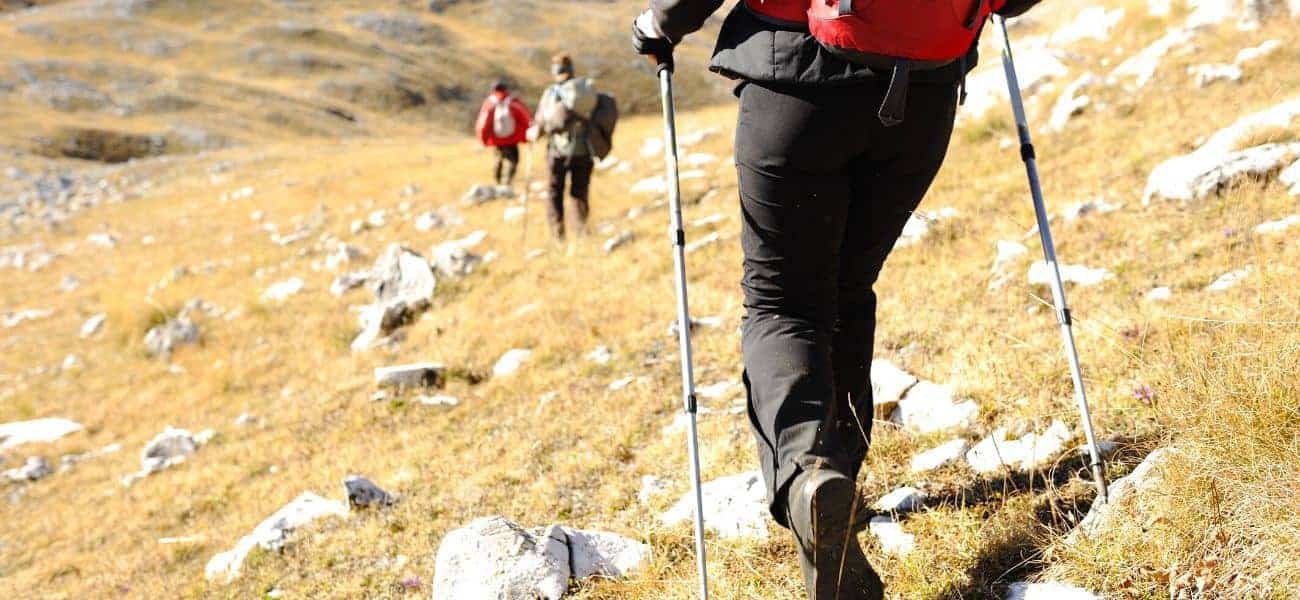Before you go hiking, there are a few skills you should learn. These include how to navigate with a map and compass, how to follow a trail, how to plan and prepare for a hike, how to calculate hiking speed, how to scramble, and basic mountaineering skills.
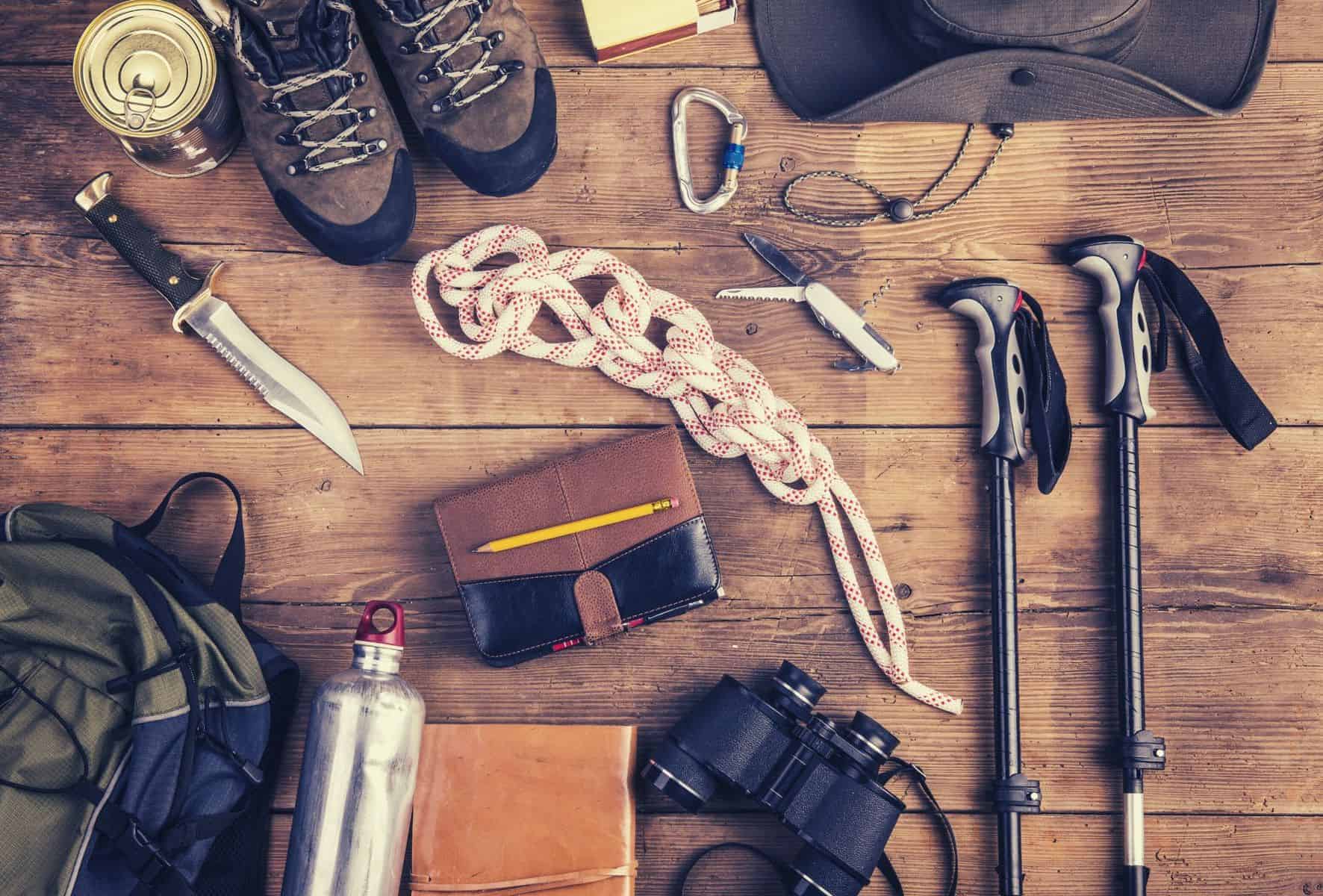
What to Take on a Day Hike: Essential Hiking Checklist
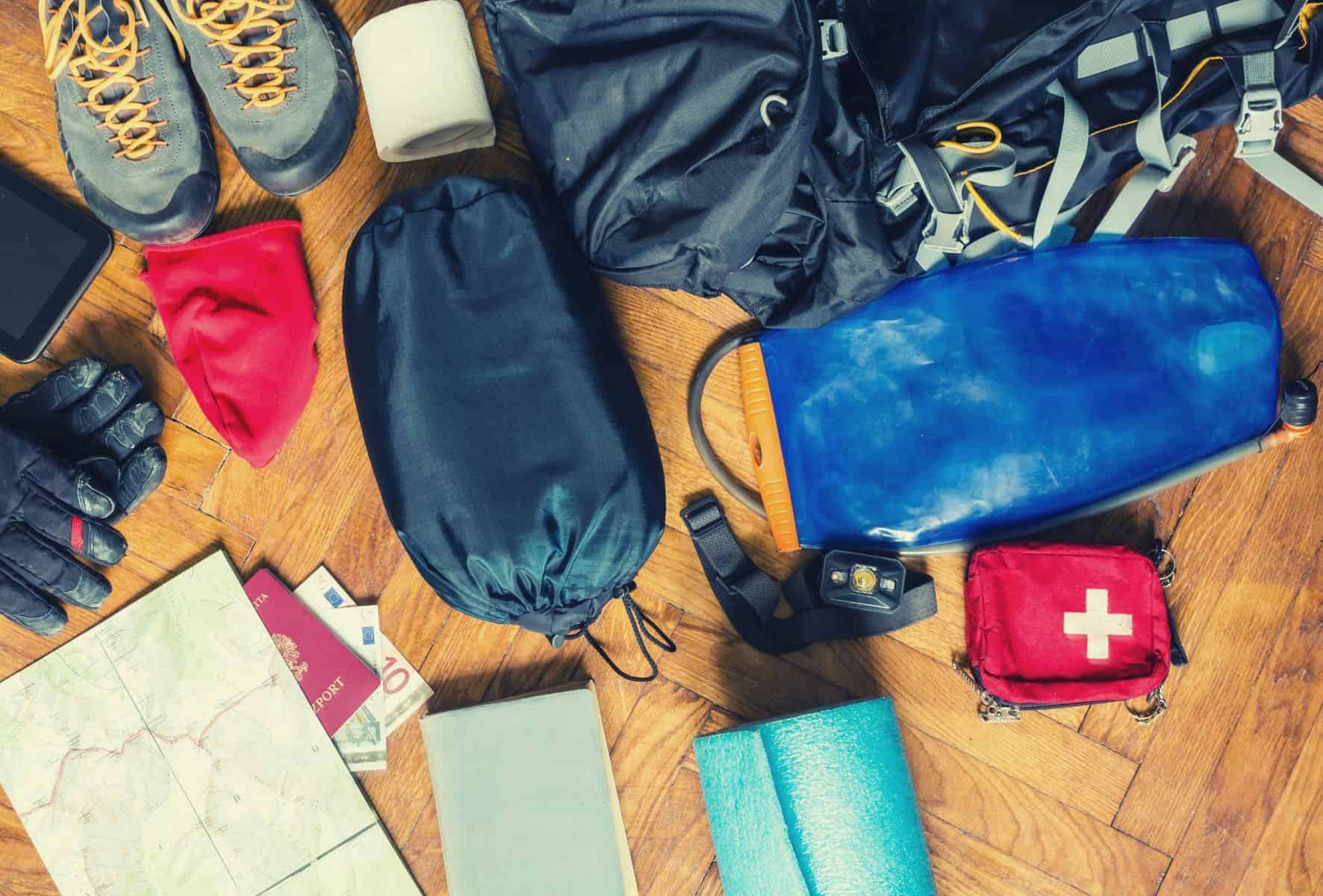
10 Essentials for Hiking & Backpacking
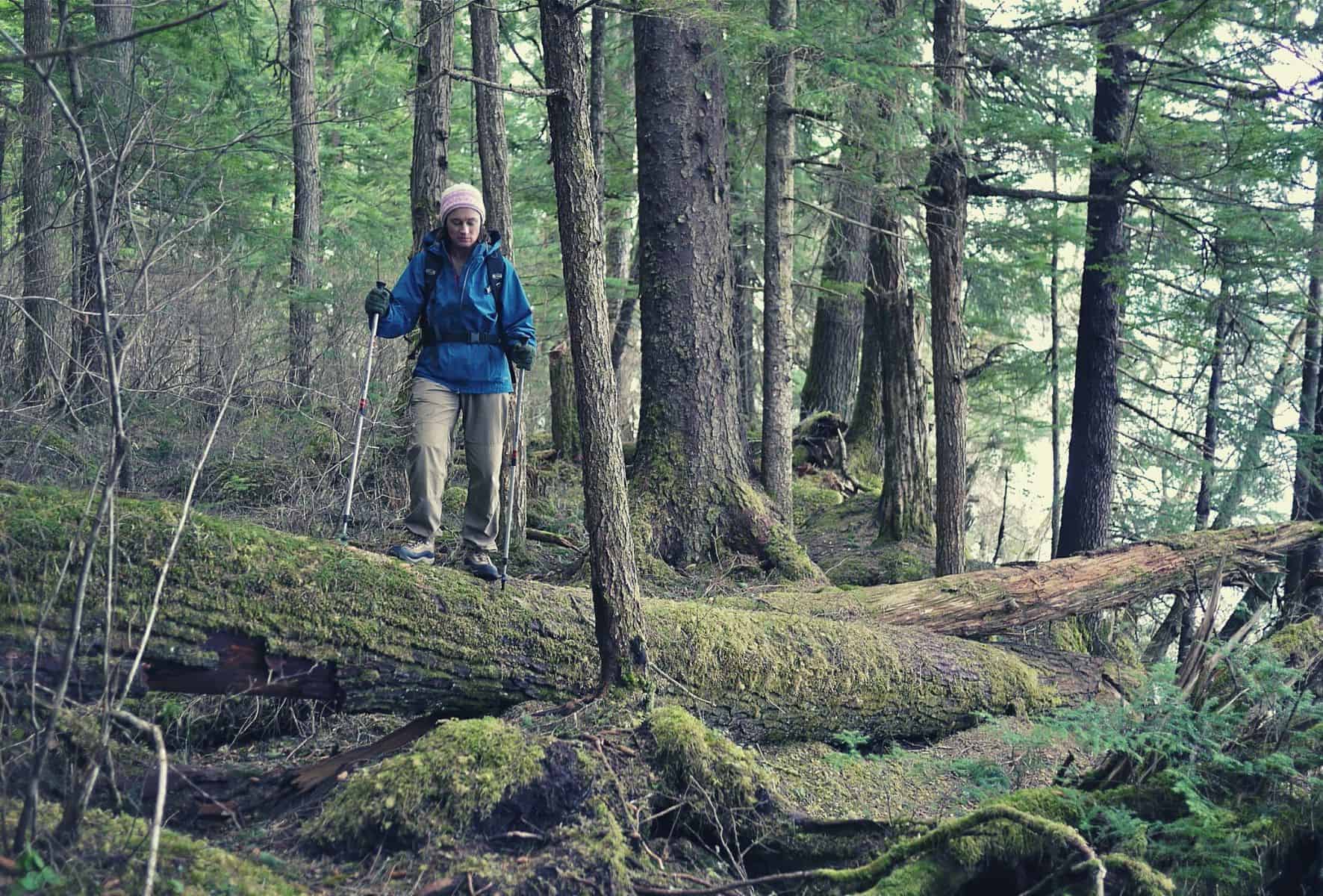
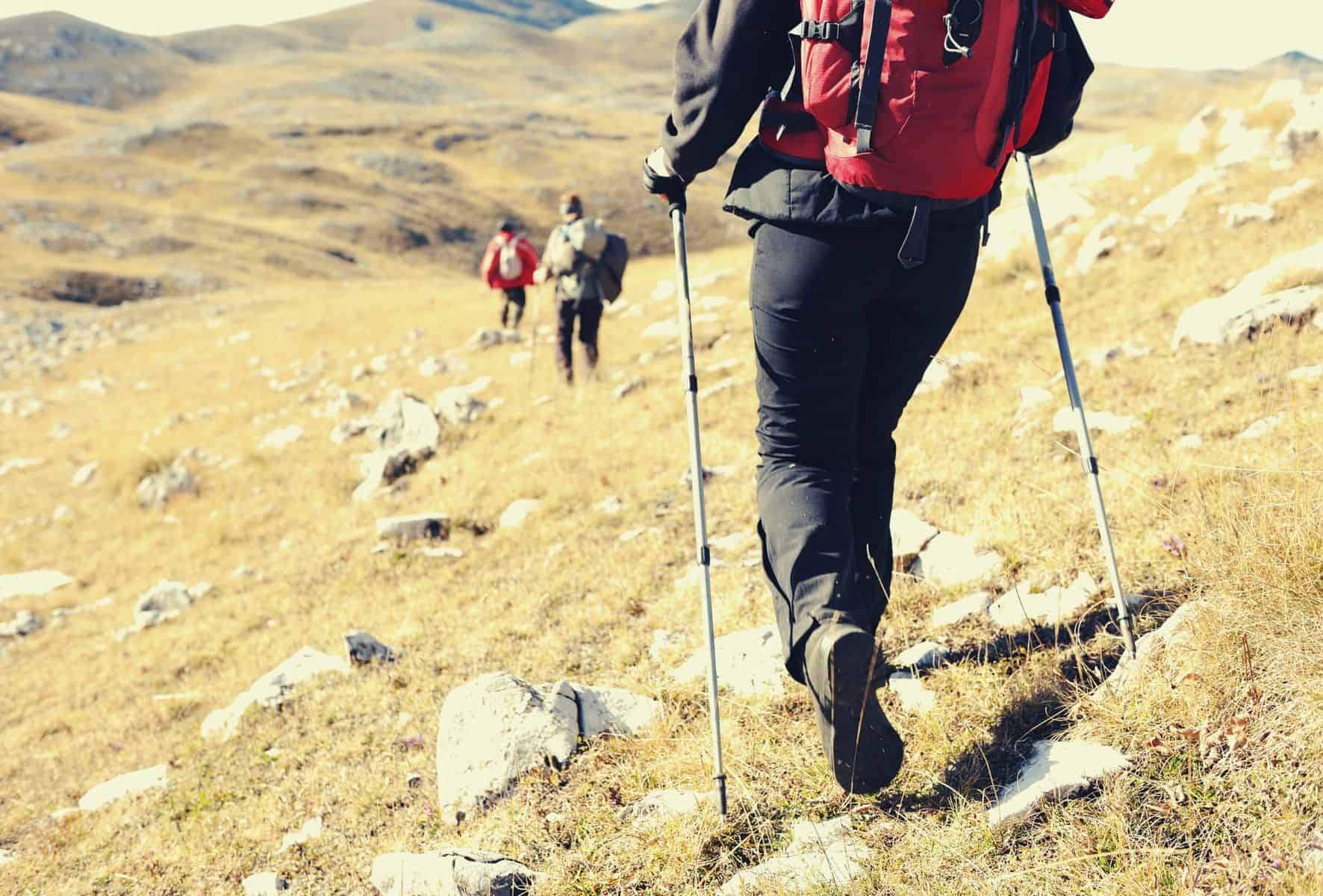
Hiking for Beginners: Start Hiking with Confidence
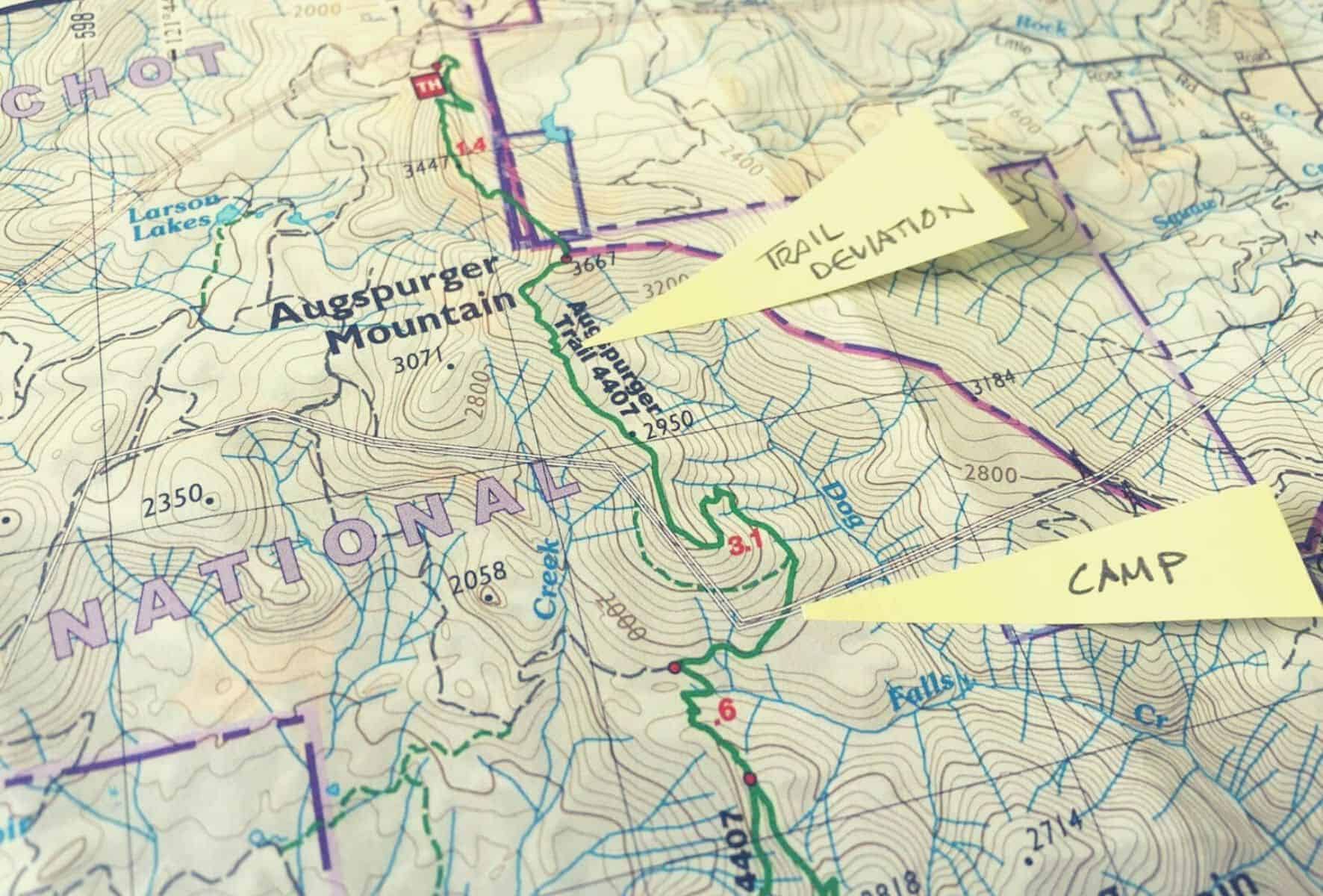
How to Plan a Hiking Route: 5 Steps to Success
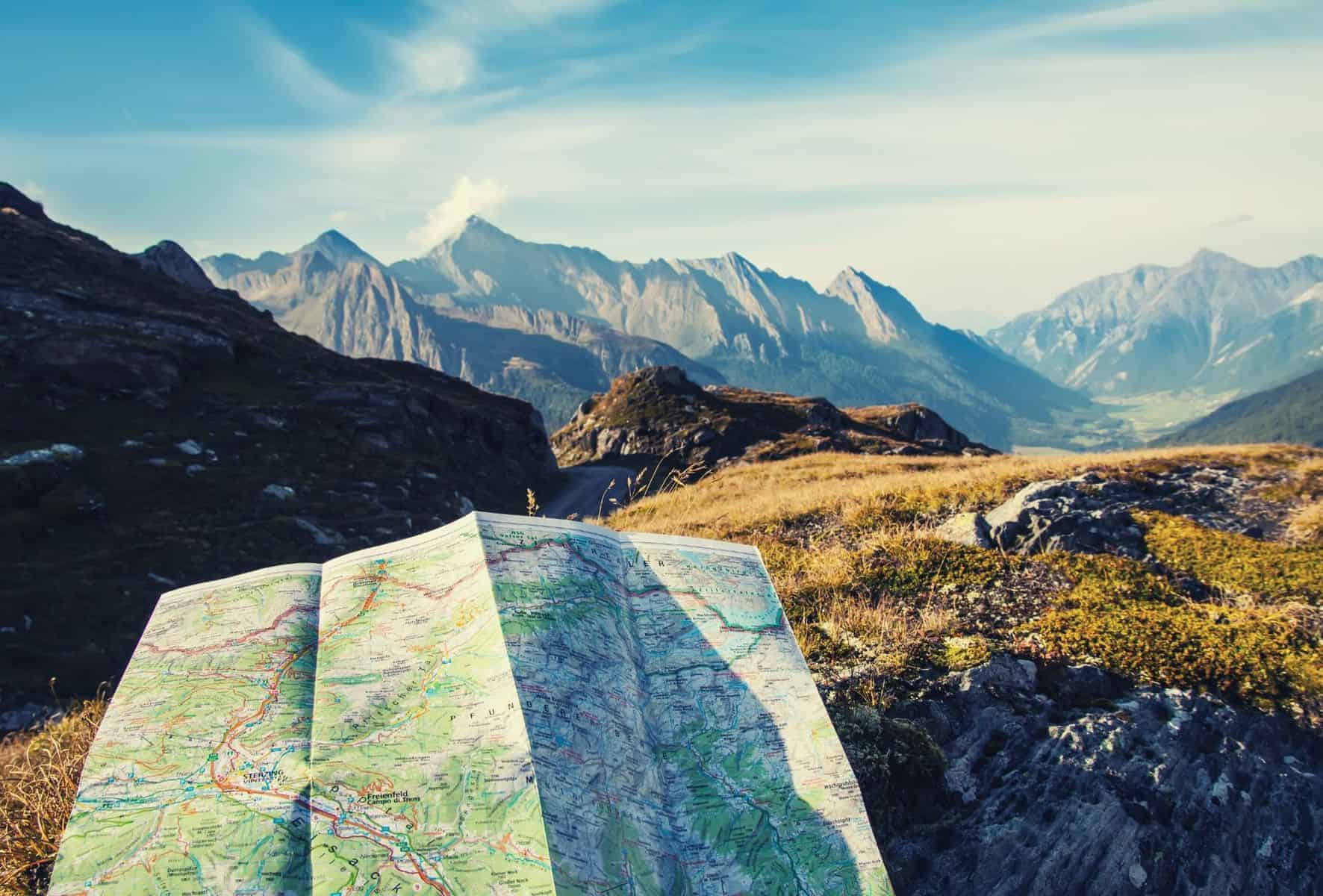

How to Use Trekking Poles

Walking on Roads: 13 Safety Tips for Hikers
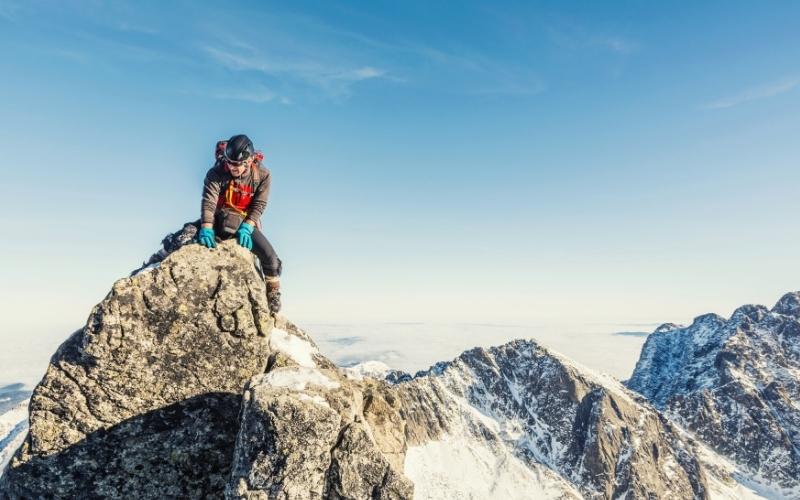
What is Scrambling in Hiking? A Beginner’s Guide

Why are hiking skills important to learn?
Learning fundamental hiking skills is important for the safety and enjoyment of both you and your hiking companions.
What are some key skills required for hiking?
The main skills required for a hiking trip are summarized in the list below.
- Navigating with a map and compass.
- Following a trail.
- Understanding trail signage.
- Administering first aid.
- Using trekking poles.
- How to leave no trace.
- Understanding weather forecasts.
- Planning a hike.
- Scrambling.
- Using crampons and an ice axe (in snow or icy terrain).
What risks are there to hitting the trail without these skills?
If you start hiking without first developing the necessary skills, you risk sustaining an injury, death, getting lost, or simply having a miserable time.
In what terrain are these skills particularly important?
- Map and compass use. All terrain.
- Ice axe and crampon use. Icy or snowbound terrain.
- Scrambling. Steep, rocky terrain.
- Administering first aid. All terrain.
- Fording a river. Usually remote terrain following spring thaws.
- Basic ropework. Steep and exposed terrain.
How can you improve your hiking skills?
The best ways to improve your hiking skills are to take a course or to hit the trails with more experienced hikers. After that…practice, practice, practice!
How long does it take to master these hiking skills?
No single hiking skill is particularly difficult to learn, so anyone can become proficient with a few weeks to a month of dedicated practice.
Where can you learn hiking skills?
The following list includes some of the best places to learn hiking skills.
- REI
- NOLS
- The American Alpine Institute
- Outward Bound
- With local hiking clubs or groups
- With an experienced friend
Where are there hiking skill classes you can take?
Organizations like REI, NOLS, and Outward Bound all provide hiking skills courses in locations across the US.
What advanced hiking skills can be learned?
The following list includes some advanced hiking skills you can learn.
- Navigating by the stars.
- Navigating without a compass.
- Foraging.
- Crampon techniques.
- Walking with an ice axe.
- Self-arrest with an ice axe.
- Assessing avalanche danger.
- Pacing.
- River crossings.
- Scrambling.
The main reason why hikers need to learn navigation skills is to avoid getting lost. Other reasons are to complete their trail in good time, be able to hike trails with little signage, and to avoid hazards.
What is a hiking compass?
A hiking compass is a basic, handheld navigational tool with a magnetized needle that shows the direction of magnetic north, from which hikers can take bearings for other directions. It is important that a hiker understands how to use a compass correctly in the field.
What are the basic features of a hiking compass?
The main features of a hiking compass are the base plate, bezel, ruler/scales, housing, orienting lines, orienting arrow, index line, and the magnetic needle.
How do you use a hiking compass?
To use a compass when hiking, you need to learn how to adjust for magnetic declination, how to orient your map using your compass, how to take a bearing, how to walk on a bearing, and how to triangulate.
How do you find true north with a compass?
First, find out the declination value for the area you are hiking in – this can be found on up-to-date maps or online. Next, rotate the bezel on your compass, adjusting the orienting arrow until it is aligned with the declination value. Finally, turn the compass until the magnetic needle lines up with the orienting arrow. Now the direction of the travel arrow will point to true north.
What common mistakes are made using a hiking compass?
The most common mistakes when using a hiking compass are forgetting to adjust for magnetic declination, having the map upside down when taking a bearing (so north and south are mixed up), and holding the compass too close to your body, which can lead to metallic items on your person interfering with the magnetic needle.
What is a hiking map?
Hiking maps are topographical (“topo”) maps that use elevation contour lines to show the shape of the terrain. Hiking maps also include several hiking-specific symbols – for trailheads, trail numbers, fords, and stairs, for example.
How do you read a hiking map?
The easiest way to read a topographic hiking map is to orient it by aligning the north-south grid lines with the magnetic needle on your compass and then trying to cross-reference features on your map with features in the terrain. You’ll also need to understand the map’s scale and symbols and learn how to triangulate to pinpoint your location with precision.
What symbols are important to recognize on a hiking map?
Almost all topographic map symbols on a hiking map are important. However, the most crucial are the compass rose, hiking trail number and junctions, the trailhead and terminus, cliffs, contours, water sources, river crossings, and shelters.
Where do you get hiking maps?
The best place to find hiking maps is from a nationwide retailer like REI or from USGS.
How do you use a compass with a map?
To use your compass and map in the field, start by adjusting for magnetic declination and orienting your map to face north. Next, take a bearing on a landmark you can identify on your map and in the terrain, then place the edge of your compass on the landmark on the map. Rotate your body with the compass until the magnetic needle is aligned with the orienting arrow in the bezel, then use a pencil to draw a line down the length of the edge.
To complete the process, repeat the above steps with two more landmarks. Where all three lines intersect is your rough location.
What challenges might you have using a map and compass?
The main challenges you are likely to face when using a map and compass are adjusting for the correct declination value, ensuring there’s no interference with your compass’s magnetic needle (aka “local attraction”), and compass bubbles.
Maps are also tricky to use in wet and windy conditions, so be sure to invest in a map case and fold the map so you have the area you’re hiking in visible and no more.
What are hiking trail markers?
Hiking trail markers are a series of painted blazes, plaques, signs, or cairns used to indicate the direction in which hikers should go on a trail.
How do you read hiking trail markers?
One trail marker means go straight ahead. Two trail markers, when one is slightly higher on the left than the other, means veer left. If one of two trail markers is slightly higher on the right, it means veer right.
What is an altimeter for hiking?
An altimeter is an instrument used to determine your altitude or elevation. You can use a hiking altimeter in combination with the contour lines on a topographical map to find your whereabouts.
How accurate are hiking altimeters?
Most hiking altimeters are accurate to within 1 or 2% if correctly calibrated at the beginning of a hike. However, readings on your altimeter will change if the barometric pressure changes, even if you remain at the same elevation, so inaccurate readings can occur with the arrival of a low or high pressure system.
Why is planning preparation essential before hitting the trail?
The reasons why planning and preparation are so important for hikers are summarized in the following list.
- Reduce the risk of forgetting vital equipment.
- Help you avoid hazards.
- Ensure you’re prepared for any eventuality.
- Make the most of the time you have.
- Ensure you don’t miss any highlights.
- Help make sure you don’t bite off more than you can chew.
- Reduce the risk of being sprung by any unwelcome surprises.
- Increase your chances of success.
How do you plan a hiking trip?
When you’re all set to go hiking planning your hiking route should begin with researching and choosing a trail. After that, buy a map and get familiar with the “lay of the land”, identifying any hazards on the route (wildlife, river crossings, snow, etc.) and estimating the time required to complete the trail.
Before you hit the trail, check the trail conditions and weather forecast, choose appropriate footwear and clothing, pack the Ten Essentials. Finally, share your plans with a friend or family member, then get your hike on!
What factors will influence your plan?
The main factors influencing your plan will be weather conditions, trail conditions, the experience and fitness levels of group members, the number of daylight hours, and the presence of any hazards on the trail.
How do you calculate hiking speed?
You can calculate your average hiking speed in three ways: by using an app or GPS watch; by using Naismith’s Rule; or by dividing the time it takes you to hike any trail by the trail’s overall mileage.
Naismith’s Rule states that hiking 3 miles on flat land should take 1 hour for a healthy, able-bodied person, giving an average speed of 3 miles per hour. An additional hour should be added for every 2,000 feet of elevation gain (600M), or 10 mins per 100 m (328 ft) of ascent.
Why is knowing hiking speed important?
Knowing your hiking speed is important because it lets you plan your route in more detail, avoid biting off more than you can chew, and avoid getting caught out after dark or in afternoon thunderstorms.
What different types of hiking-specific skills are there?
The following list contains the main hiking-specific skills you might want to learn.
- Using a map and compass
- Wilderness first aid
- Reading the terrain
- How to ford a river
- Pacing
- Trip planning
- Crampon techniques
- Walking with an ice axe
- Self-arrest with an ice axe
- Scrambling
- Basic rope work for scrambling and “confidence roping”
What is scrambling?
Scrambling in hiking is a form of hiking-climbing hybrid in which you use your hands as well as your feet to ascend steeper sections of trail.
How to go scrambling safely?
To stay safe when scrambling, wear a helmet and consider using a rope and traditional protection (cams and nuts).
What is mountaineering?
Mountaineering is the activity of ascending mountains, most often using more technical skills, techniques, and equipment than needed for hiking.
How to go mountaineering safely?
To make your mountaineering excursions safe, we recommend you take a course in mountain climbing for beginners or get an experienced friend to teach you basic ropework techniques, how to use crampons and an ice axe, how to assess avalanche danger, and how to anticipate incoming weather fronts.
If you plan to venture into glaciated terrain, it’s essential to learn how to navigate this type of terrain and crevasse-rescue techniques.
Before tackling a big mountain, invest in the best gear you can afford and prepare yourself physically and mentally by “upping the stakes” on gradually bigger and more technical practice peaks. And wherever you go, always wear a helmet!
